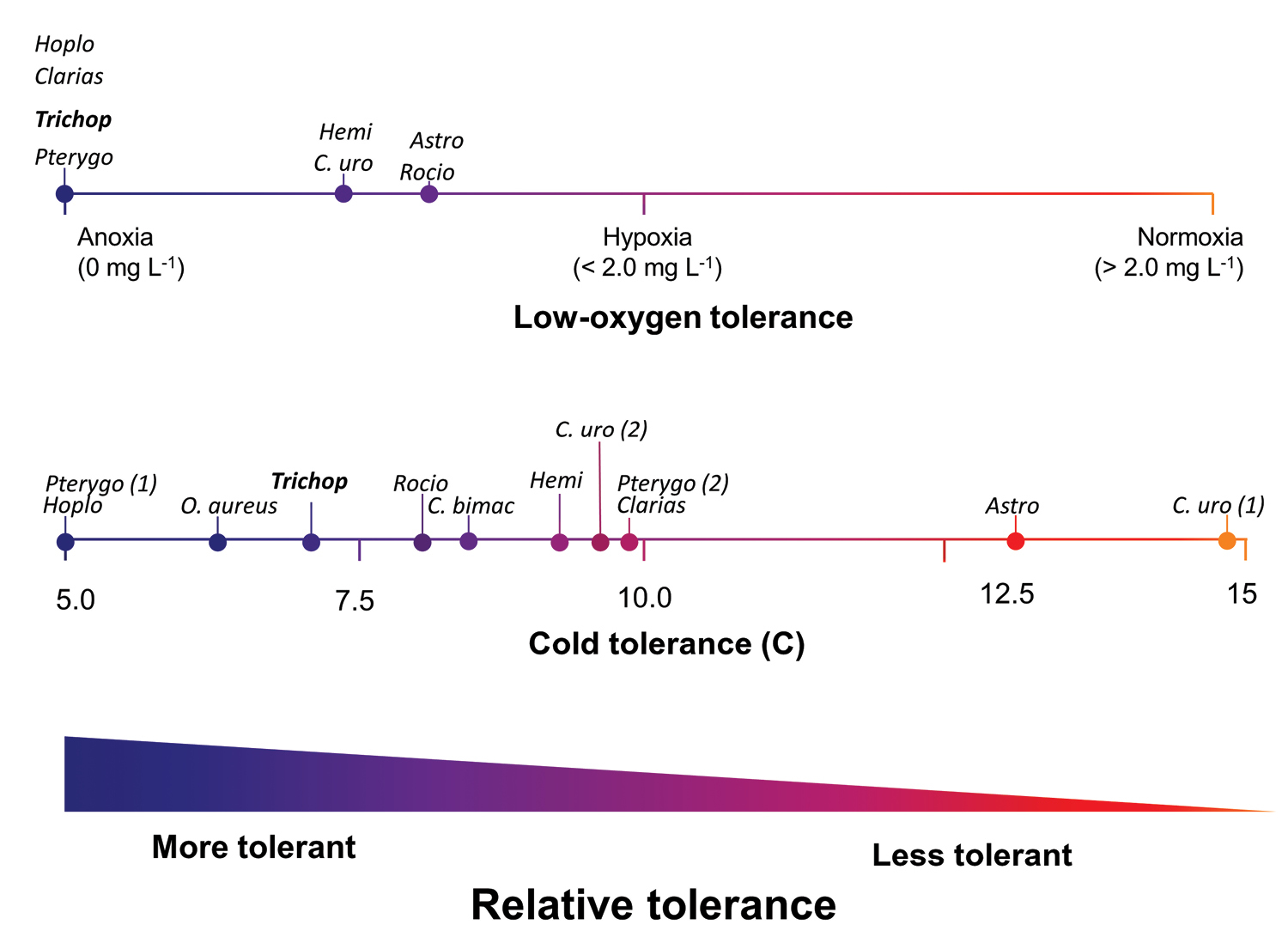
|
||
|
Graphic representation of relative ecophysiological ‘toughness’ for T. vittata and sympatric non-native fishes. References for cold and low-oxygen tolerance are given in Table 2. Two values are presented for cold tolerance of C. urophthalmus as two separate reports provided dissimilar data (Table 2). Two values are given for Pterygoplichthys spp. corresponding to two different species (Table 2). “O. aureus” = Oreochromis aureus; “Pterygo” = Pterygoplichthys spp.; “Hoplo” = Hoplosternum littorale; “Clarias” = Clarias batrachus; “Trichop” = Trichopsis vittata; “Hemi” = Hemichromis letourneuxi; “C. uro” = Cichlasoma urophthalmus; “Astro” = Astronotus ocellatus; “Rocio” = Rocio octofasciata; “C. bimac” = Cichlasoma bimaculatum. |